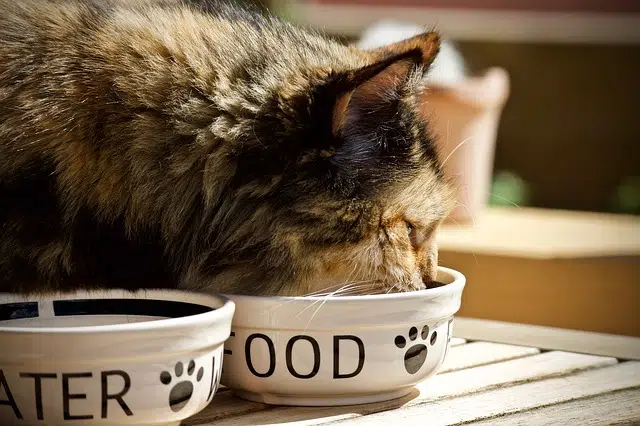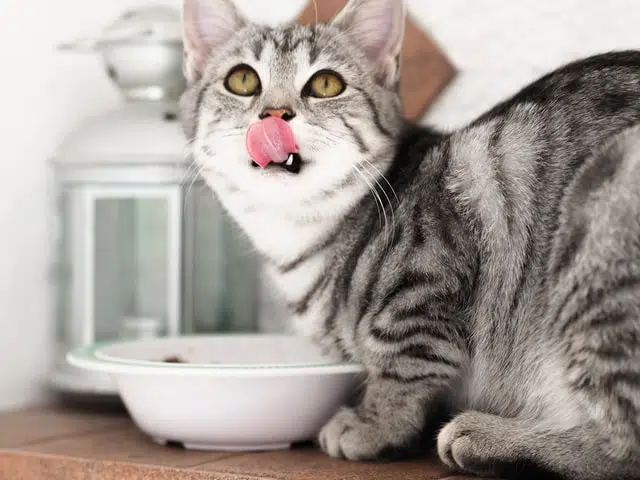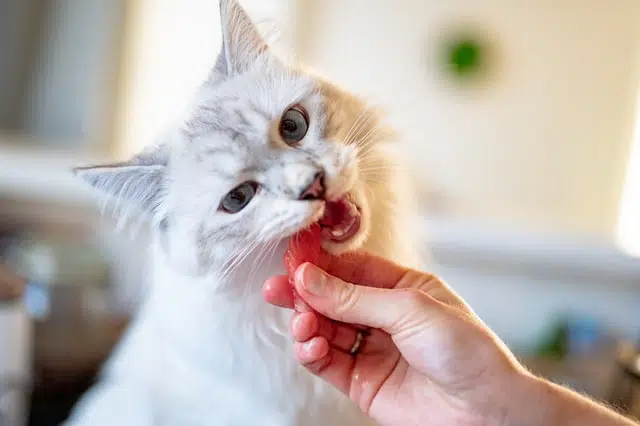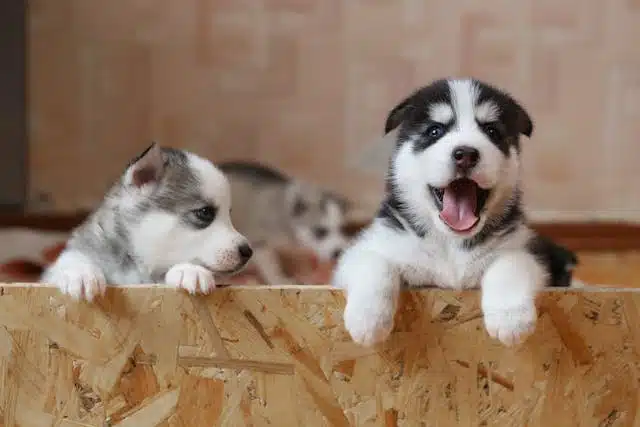Home » Blog » Pet » Pet Health & Safety » Dry Cat Food or Wet? How to Choose
Categories
Tags
animal welfare
breed profile
buying a car
buying a pet
Car
car accessories
car care
car features
car insurance
Car safety
car sales
car service
cat
cat behaviour
cat body language
Cat Breeds
cat food
cat insurance
comprehensive car insurance
Dog
Dog Behaviour
dog body language
Dog Breeds
dog food
Dog Insurance
dog training
eco friendly cars
Kitten
New Car
pet accessories
pet activities
Pet Adoption
pet breeders
pet days of the year
pet fun stuff
Pet Health
pet insurance
pet parenting
Pet Safety
pet services
Puppy
rescue pets
road safety
road trip
safe driving
Recent Blog:
Facebook Posts
13 hours ago
Are intestinal worms setting up camp in your dog’s gut without paying rent? Here’s how to spot the main culprits and get rid of them too:![]()
![]() Preventing, Identifying and Treating Intestinal Worms in Dogs - bit.ly/43YjCKu
... See MoreSee Less
Preventing, Identifying and Treating Intestinal Worms in Dogs - bit.ly/43YjCKu
... See MoreSee Less
Preventing, Identifying and Treating Intestinal Worms in Dogs
www.pd.com.au
Intestinal worms, such as roundworms in dogs are one of the least glamorous topics on the planet. These intestinal parasites that basically use our dogs
PD Insurance
with Dogs West.
2 days ago
We enjoyed meeting #breeders #doglovers and members at the Dogs West Open Day. Special thanks to our partner Dogs West for organising an incredible event. There is still time to enter our pawsome competition. Click here for details: bit.ly/4covyce![]() #PDinsurance #dogswestopenday #dogswest
... See MoreSee Less
#PDinsurance #dogswestopenday #dogswest
... See MoreSee Less
3 days ago
Did you know? The Manx is a breed that is known for its lack of a tail, which is caused by a genetic mutation.
... See MoreSee Less
Are you a kitten or cat parent? And have you ever found yourself questioning dry cat food vs wet and wondering which is best for your feline friend? It’s a common question among cat parents, especially with all the variables on price point and health benefits.
The answer isn’t black and white (nor is it grey). It’s more a colourful array of getting the perfect balance of nutrition intake according to your cat’s breed, age, health and lifestyle. Because as you may have guessed there are some perks to both food types.
So which one will it be? Dry cat food, wet cat food, or a combo of both? We’ll give you the data you need to make the purrrfect choice.
Benefits of wet cat food
Picture a lion on the savannah. If you imagine it feeding, do you see it chomping on a juicy gazelle (apologies to the vegos reading this) or sipping from the water hole? You’re probably picturing the gazelle right? And there’s a reason for this…
If you’ve ever read the international bestseller Cry of the Kalahari, you’ll be familiar with Mark and Delia Owens’ personal encounters with wild lions. The ‘Blue Pride’ as the young couple affectionately called them sometimes coped without a single drop of water for months at a time in times of drought. How is this possible?
Big and small cats aren’t that inclined to drink lots of water because they’re evolved to get most of their liquids from the food they eat. This is precisely one of the major benefits of feeding wet cat food to your house cat. He or she may not drink enough liquid of their own accord, but if they’re eating wet food they’ll get adequate hydration. This prevents all sorts of health complications, like for example, kidney stones.
Here are more benefits to feeding cats wet food:
- Urinary tract infections. Cats who eat wet food are less likely to get urinary tract infections, thanks to adequate hydration
- Weight management. Wet food has fewer unnecessary carbohydrates and helps cats stay at an optimum weight
- Tasty. Fussy eaters tend to like wet food more than dry food
On the other hand, wet cat food isn’t ideal if your cat leaves leftovers and circles back later. These can breed harmful bacteria that could be dangerous if your cat eats them after they’ve been sitting out.

Benefits of dry cat food
Kibble also has a large range of benefits for cats, many of which come down to your cat’s eating style and your lifestyle.
Here are a range of benefits to a dry cat food diet:
- Price. Dry cat food is often cheaper, which gives you more room to manoeuvre with your budget
- Dental health. Kibble may give your cat’s teeth a bit of a scrape, helping both teeth and gums stay healthy
- Convenience. Dry cat food is soooo much easier to store and dish out
- Freshness. When your cat doesn’t finish all in one go there’s less risk of kibble going off and causing food poisoning
- Flexible eating. Dry food is great for cats who tend to nibble and want to eat in spurts because they can come back any time during the day to top up
- Flexible feeding. It’s handy for pet parents who aren’t at home during the day and need to leave cat food out for their kitty
- Food toys. Kibble is great for interactive food toys, which can be stimulating for cats and prevent them from overeating
On the flip side cats don’t give that much thought to staying hydrated, so cats who eat only kibble can develop health issues from a lack of liquid intake. Another issue with dry food can be weight gain. Dry food is packed with more energy and if your cat doesn’t expend enough energy they can end up overweight or obese.
Obesity can cause diabetes in dogs and cats, which is not ideal in the least. Read about National Pet Obesity Day for tips to keep pets healthy. And watch this video to see how interactive cat food toys make eating fun (and slow it down at the same time):
Wet cat food vs dry for kittens
At least half of a kitten’s food intake needs to be wet food. However, if you’re bringing them home for the first time, keep feeding them what they’ve been eating. You can have two bowls side by side, one with new and one with the familiar food.
This gentle transition will help a kitten get comfy and won’t frighten them off new tastes. Wet food is gentler on your kitten’s teeth, but as mentioned dry food has its dental benefits too.
Dry food being less likely to go bad when left out during the day allows your growing kitten to get a good intake of nutrients as soon as they’re hungry – which with kittens is more often than adults. Find out five more things new kitten parents need to know.
Cat food options: Getting the best of both worlds
Possibly more important than the wet vs dry cat food question is asking which food has the best balance of nutrition for your cat. Ideally you have a vet who knows your cat well; a vet recommended diet will very likely include both a balance of wet and dry food.
Healthy pet food is the one that best caters to your cat’s age, breed and if they have any health issues.
Did you know different purebred cats are prone to specific genetic issues? For example, a Siamese cat is prone to bone and vision issues (and food allergies). Ragdolls on the other hand need a special attention paid to their their gums and teeth, while Persians can have heart health considerations. Read ‘what cat breed are you?’ and discover more about different cat breeds’ health needs.
As cats age, you may need to accommodate changes to their dental needs as well as their eating habits. This is why consulting your vet about an optimum dietary plan in terms of vitamins, minerals and energy needs is a good approach.
To sum up the answer to the wet vs dry cat food question, the best of both worlds according to your cat, your vet and you is how to get it right.

Cat insurance for a softer landing
Unfortunately, cats don’t always land on their feet. For those scrapes, scratches and vet checkups, pet insurance goes a long way to giving you peace of mind. Getting insurance for a kitten when they’re at optimum health also means if they develop hereditary conditions these will also be covered by your plan (after a waiting period).
This is different from getting a pet plan once your cat has already developed ailments. If you wait to get pet insurance after your cat experiences illnesses and injuries, then they may be seen as pre-existing conditions and if so you won’t be covered for them.
This is why the sooner you get cat insurance, the better. PD Insurance makes this easy for cat owners, with one or more months of free cover when you take out a policy online.
Share On:




